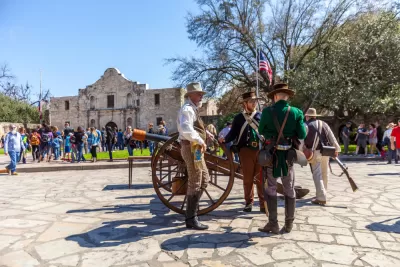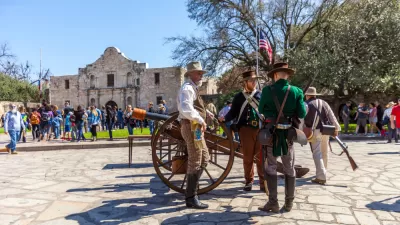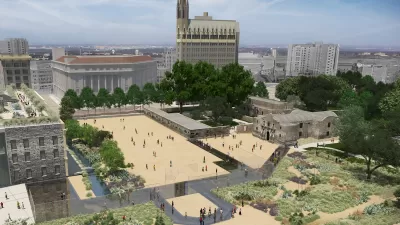Alamo City enters the 300 club.

The city of San Antonio is spending the year celebrating its 300th birthday, with events focused on history, education, arts, and culture scheduled for the entire year. The city also just wrapped up its Commemorative Week, which celebrated the key milestones in the city's creation 300 years earlier. The San Antonio 300 website explains:
On May 1, 1718 the Mission San Antonio de Valero – later known as the Alamo – was established. Four days later the Presidio San Antonio de Bejár was formed to protect the new mission. San Antonio’s five area missions are Texas’ only UNESCO World Heritage site and will be at the forefront of many activities during the Tricentennial year.
The Texas Monthly spent the month of April running a series of articles to capture the city at 300.
A massive urban renewal project that’s reviving plaza culture. An Alamo fight centuries in the making. Avant-garde Mexican food inspired by Maya trade routes. From billionaire Kit Goldsbury to artist Ana Fernandez to former NBA All-Star Tim Duncan, seventeen San Antonians talk about why the historic city might be the most interesting place in America right now.
The articles are collected on the same web page, but we recommend starting with Robert Rivard's story about the ongoing evolution of the Alamo, described as besieged by "commerce and schlock" with "all the gravitas of a saloon." The Alamo Master Plan Management Committee is working hard on a renovation of the Alamo's plaza, to be revealed in the coming months.
FULL STORY: San Antonio at 300

Alabama: Trump Terminates Settlements for Black Communities Harmed By Raw Sewage
Trump deemed the landmark civil rights agreement “illegal DEI and environmental justice policy.”

Planetizen Federal Action Tracker
A weekly monitor of how Trump’s orders and actions are impacting planners and planning in America.

The 120 Year Old Tiny Home Villages That Sheltered San Francisco’s Earthquake Refugees
More than a century ago, San Francisco mobilized to house thousands of residents displaced by the 1906 earthquake. Could their strategy offer a model for the present?

USDOT Repeals Emissions Monitoring Rule
A Biden-era regulation required states to report and plan to reduce transportation-related emissions.

CaBi Breaks Ridership Record — Again
Washington D.C.’s bike share system is extremely popular with both residents and visitors.

San Francisco Opens Park on Former Great Highway
The Sunset Dunes park’s grand opening attracted both fans and detractors.
Urban Design for Planners 1: Software Tools
This six-course series explores essential urban design concepts using open source software and equips planners with the tools they need to participate fully in the urban design process.
Planning for Universal Design
Learn the tools for implementing Universal Design in planning regulations.
Clanton & Associates, Inc.
Jessamine County Fiscal Court
Institute for Housing and Urban Development Studies (IHS)
City of Grandview
Harvard GSD Executive Education
Toledo-Lucas County Plan Commissions
Salt Lake City
NYU Wagner Graduate School of Public Service




























